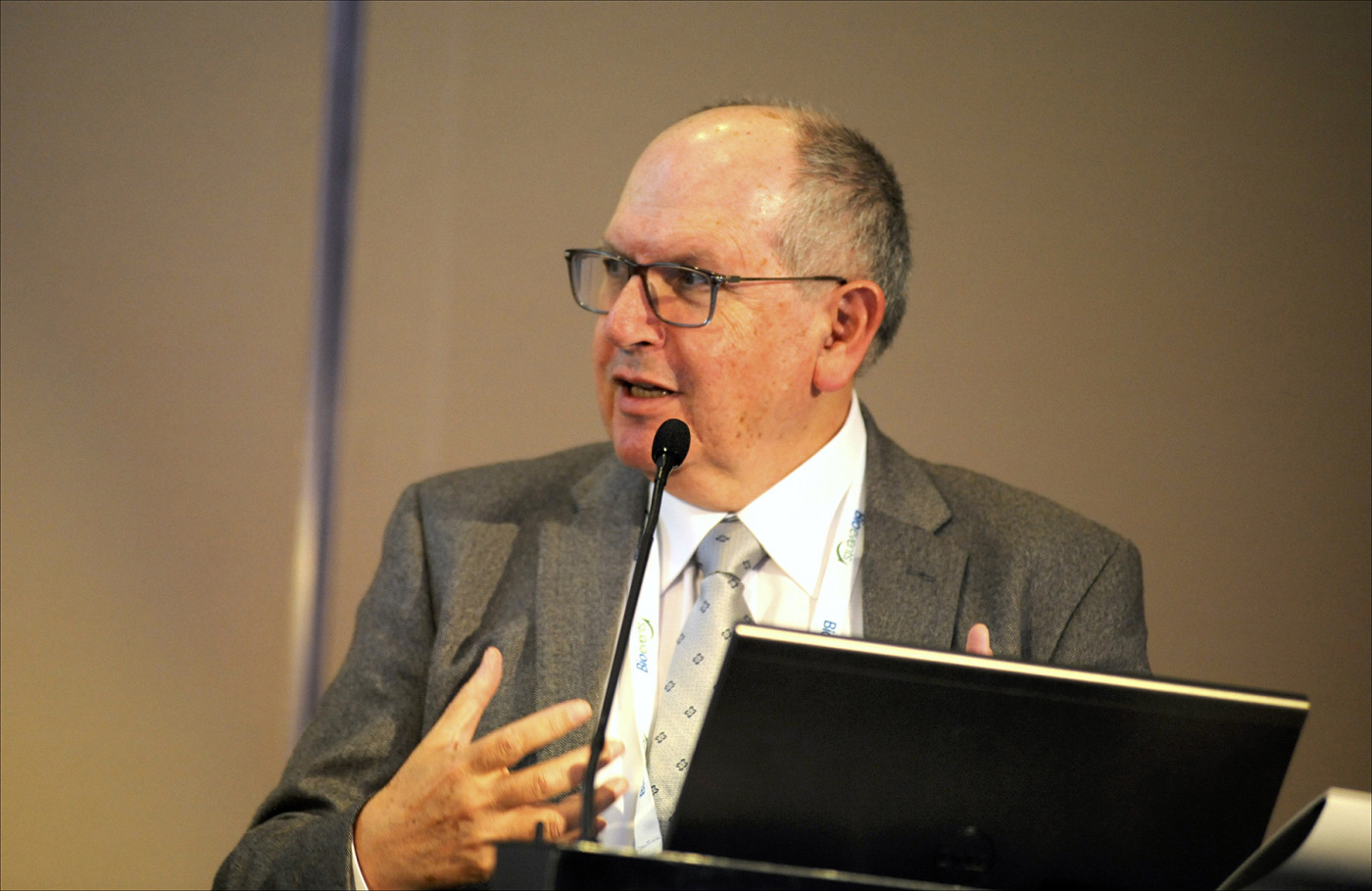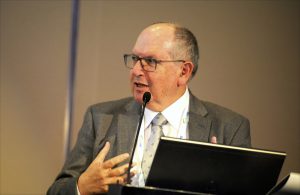At Vienna Conference, Gaucher Experts Discuss Treatment of ‘Model Disease’

Ari Zimran, MD, heads the world's largest specialized Gaucher disease clinic in Israel. (Photo by Larry Luxner)
Gaucher disease took center stage at a recent medical conference in Vienna, Austria, organized by Ari Zimran, MD, director of the Gaucher Clinic at Israel’s Shaare Zedek Medical Center.
“Gaucher is an amazing model for rare diseases, because even though here in Israel it’s far more common — occurring in about one in 850 Ashkenazi Jews — it behaves like a typical rare disease in that there is no awareness,” Zimran told Gaucher Disease News. “The doctors, even if they’ve heard about it, are unlikely to consider it because in medicine that’s the way we’ve been educated.”
Enzyme replacement therapy (ERT) was a “milestone in the history of medicine,” he said.
“But sometimes, when there are too many choices, you choose wrongly, and you don’t serve the interests of the patients,” Zimran said, noting that one of the biggest challenges in Gaucher is delayed diagnosis, which may allow irreversible complications to develop before treatment begins.
Zimran, whose Jerusalem clinic has grown since its founding in 1990 to become the world’s largest specialized facility for treating Gaucher disease, was one of more than a dozen speakers at the 2nd International Congress on Advanced Treatments in Rare Diseases, held March 4-5 in the Austrian capital.
“Doctors often don’t think about rare diseases,” he said. To prove his point, Zimran cited a 2007 survey of 406 hemato-oncologists in the U.S. and Australia, all of whom were presented with the hypothetical case of a 42-year-old man with anemia, thrombocytopenia, hepatomegaly, splenomegaly, and either acute or chronic bone pain.
Asked to choose one or more possible condition that came to mind as relevant to such a patient, 65% of respondents said leukemia, 22% multiple myeloma, 14% chronic granulocytic leukemia, 4% bleeding disorders and 32% other conditions. Only 20% correctly guessed Gaucher disease.
“You don’t need to go very far,” Zimran said. “Even in my own institute, where we have a Gaucher unit, a 30-year-old Ashkenazi Jew waited three years before her correct diagnosis was made.”
Estimating size of patient population
Jeff Szer, a bone marrow transplant physician at Australia’s Royal Melbourne Hospital, said Gaucher is more than 100 times more prevalent among Ashkenazi Jews — those mainly of European origin — than in the general population.
“Gaucher is a model rare disease because of the relative simplicity and predictability of most of its clinical manifestations,” he said. These include easy bruising or bleeding (seen in 51.5% of Gaucher patients), enlarged abdomen (46.7%) and fatigue (31.5%).
“A lot of the epidemiology of incidence was published in the 1980s, and when our treatment program was set up in 1996, we predicted that there would be 300 patients. At that time, Australia’s population was 23 million,” he said. “But 20 years later, we now know there are fewer than 100 patients in the program.”
Szer, who did a six-month sabbatical at Israel’s Shaare Zedek, said about 45% of the 30 or so Gaucher patients he sees at his Melbourne clinic are Ashkenazi Jews.
“The incidence of Gaucher disease is probably not as great as the epidemiology and gene frequency would suggest,” he said. “The companies would like us to think there are many undiagnosed cases of Gaucher. They’ve been very enthusiastic for us to go out and do screening, but these cases have never appeared. People with Gaucher who need treatment should have come to our attention, but there are very few patients in Australia who are undiagnosed.”
Yet, Gaucher is seen everywhere, with local variations. In Japan, for example, Gaucher is predominantly type 2 and type 3, whereas in the United States and Western Europe, type 1 is by far the most common form of the disease.
“It’s probably unique among rare diseases in that, except for the neurological consequences, it is possible to normalize these patients,” he said. “You can improve them to the point where the only evidence of their disease is that they’re having treatment every two weeks.”
Is gene therapy the answer?
In fact, Szer said, treatment is “remarkably successful” for the vast majority of Gaucher patients without brain pathology.
“With Gaucher, their spleen shrinks, their liver shrinks, and you get no significant new bone events in patients on therapy,” he said. “It’s very rare to see a new serious bone event with patients who have been treated.”
At the moment, two biotech companies — New York-based Prevail Therapeutics and AvroBio of Cambridge, Massachusetts — are working toward gene therapies in Gaucher.
Gabriel Cohn, MD, medical director at AvroBio, said his company, which has about 50 employees, is looking at ex vivo lentiviral vector-mediated gene therapy in rare diseases.
It soon will launch a Phase 1/2 clinical trial of its AVR-RD-02 therapy, in which a patient’s blood stem cells are modified to include a functional copy of the GBA gene, which is mutated in Gaucher patients. The trial will enroll eight to 16 patients between the ages of 16 and 35 years old, who may or may not be taking ERT.
“There’s quite a bit of promise here,” Cohn said. “The question is lifelong treatments versus a potential single-dose cure. With ERT, there are peaks and troughs. But continuous sustained elevations in enzyme may effect better outcomes than what we’re seeing. Can gene therapy address some of these issues? The hope is that one could administer a single treatment and have sustained elevation of enzyme activity.”
But Szer is skeptical.
“There is a problem in type 1 disease, in that because the response to existing therapies is so good, gene therapy is a potentially risky venture. Depending on the type you use, there’s a bone marrow transplant platform. We give the patients high-dose chemo and rely on the fact that the cells we’re giving back will repopulate the patient,” he explained.
“That’s fine if you’ve got a progressive disorder like Fabry. But in Gaucher it’s not easy to justify — and I’m struggling to find any patient who would put themselves through it,” Szer said.




